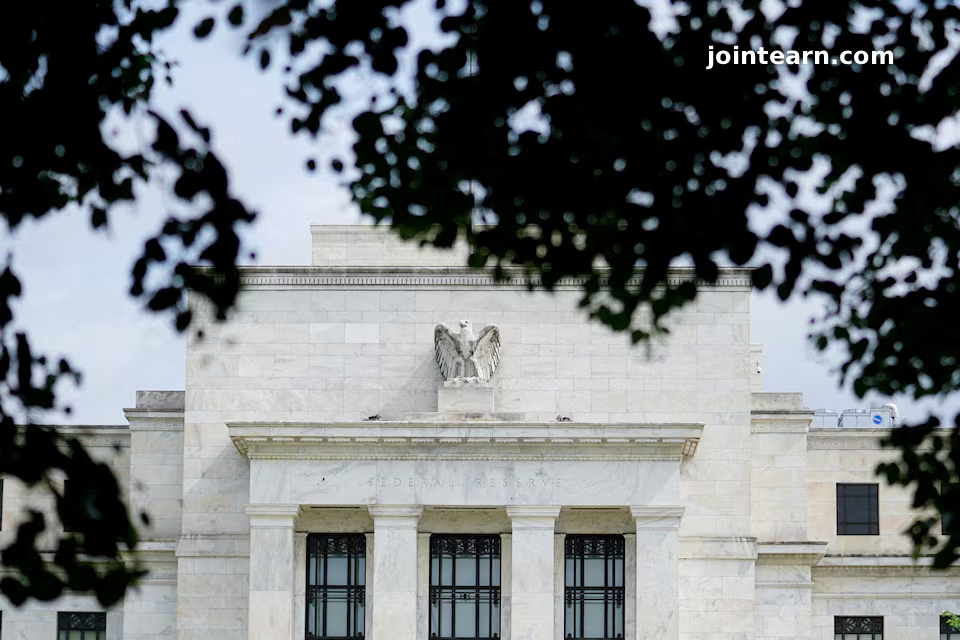Mumbai, October 15, 2025 — The Reserve Bank of India’s (RBI) latest attempt to inject liquidity into the financial system through a phased Cash Reserve Ratio (CRR) cut is yielding less impact than expected. Analysts say that foreign exchange market interventions and maturing forward contracts have offset much of the intended liquidity boost, leaving short-term interest rates under upward pressure.
In June 2025, the central bank had announced a 100-basis-point CRR cut, to be implemented gradually between September and November, aimed at releasing ₹2.5 trillion ($28.3 billion) into the banking system. However, market analysts estimate that the actual liquidity addition so far has been barely half the expected ₹1.25 trillion, as the RBI’s actions in the foreign exchange (FX) market have drained funds faster than anticipated.
CRR Cut Impact Dampened by RBI’s FX Operations
A CRR reduction typically allows commercial banks to lend more by freeing up funds they would otherwise park with the central bank. The expectation was that this measure would ease liquidity pressures and stabilize funding costs. But those hopes have faded amid persistent dollar sales and forward contract maturities that have soaked up liquidity.
“Although the CRR requirement in the banking system has declined, much of this liquidity has been absorbed due to the RBI’s foreign exchange market interventions. As a result, the net liquidity injection has not been substantial,” said Vikas Garg, Head of Fixed Income at Invesco Mutual Fund.
Even after half of the planned CRR reduction was implemented, India’s banking system liquidity briefly slipped into deficit territory last month, underscoring the fragile balance between liquidity infusion and FX management.
FX Market Interventions Offset Gains
According to ANZ economist and FX strategist Dhiraj Nim, the RBI’s ongoing efforts to support the rupee have effectively neutralized the liquidity impact of the CRR cut.
“We have held the view that the CRR cut was not even going to fully offset the FX forward book maturity drain from domestic banking liquidity, and that is playing out now,” Nim said.
The RBI reportedly has $14.45 billion in forward contracts maturing between October and November, following $5.85 billion that expired in September. Meanwhile, the central bank has been actively intervening in the currency market since late August to curb rupee depreciation amid U.S. tariff pressures and visa-related concerns.
Rupee Intervention Mirrors February Strategy
Market traders noted that the RBI intervened heavily again on Wednesday, mirroring its February 2025 strategy, when similar rupee pressures prompted a mix of spot market interventions and liquidity support operations.
“Today’s intervention has opened up doors for open market purchases (OMOs), if not immediately, then maybe after the remaining CRR cut takes effect,” said VRC Reddy, Treasury Head at Karur Vysya Bank.
In February, the central bank had followed its currency defense measures with large-scale bond purchases, helping to restore liquidity and stabilize yields — a strategy analysts expect could repeat in the coming weeks.
Liquidity Metrics Show Decline
Data indicates that average daily banking system liquidity surplus has dropped sharply since the start of the CRR cut implementation.
- Between August 1 and September 5, the surplus averaged ₹2.8 trillion.
- Since September 6, when the first phase of the CRR reduction took effect, the surplus has fallen to just ₹1.3 trillion.
This tightening in liquidity has already caused short-term funding rates to edge higher, with traders expecting yields to rise further unless the RBI introduces permanent liquidity tools or additional open market operations (OMOs).
“If a durable liquidity gap emerges, the RBI could step in with OMOs. A sharp rise in yields would almost certainly invite central bank intervention,” added ANZ’s Nim.
Policy Outlook: Balancing Rupee Stability and Liquidity
The RBI’s dual challenge of maintaining rupee stability while ensuring adequate banking liquidity is becoming increasingly complex. With U.S. interest rate volatility, rising import bills, and global geopolitical pressures weighing on the rupee, the central bank’s interventions have been more aggressive.
While these moves help stabilize the currency, they also drain rupee liquidity from the domestic market, forcing policymakers to constantly recalibrate their tools. Analysts expect the RBI may announce targeted open market purchases or temporary repo injections later this quarter if liquidity conditions continue to tighten.
Market Implications
- Bond Yields: May rise further if liquidity remains tight and OMOs are delayed.
- Rupee Outlook: Likely to stay range-bound due to continued RBI support.
- Bank Funding Costs: Could increase if liquidity gaps persist through November.
- Equity Impact: Banking and NBFC sectors could face short-term margin pressure.
The interbank call money rate — a key short-term funding indicator — has already climbed closer to the RBI’s policy repo rate, signaling reduced excess liquidity in the system.
Conclusion
The Reserve Bank of India’s liquidity management efforts highlight the delicate balancing act between supporting the rupee and maintaining sufficient banking liquidity. Despite a carefully planned CRR reduction, ongoing FX market interventions have muted the intended benefits.
Unless the RBI steps in with open market operations or long-term liquidity measures, analysts warn that short-term borrowing costs could rise further — potentially tightening financial conditions just as India’s economy navigates a period of global uncertainty.


Leave a Reply